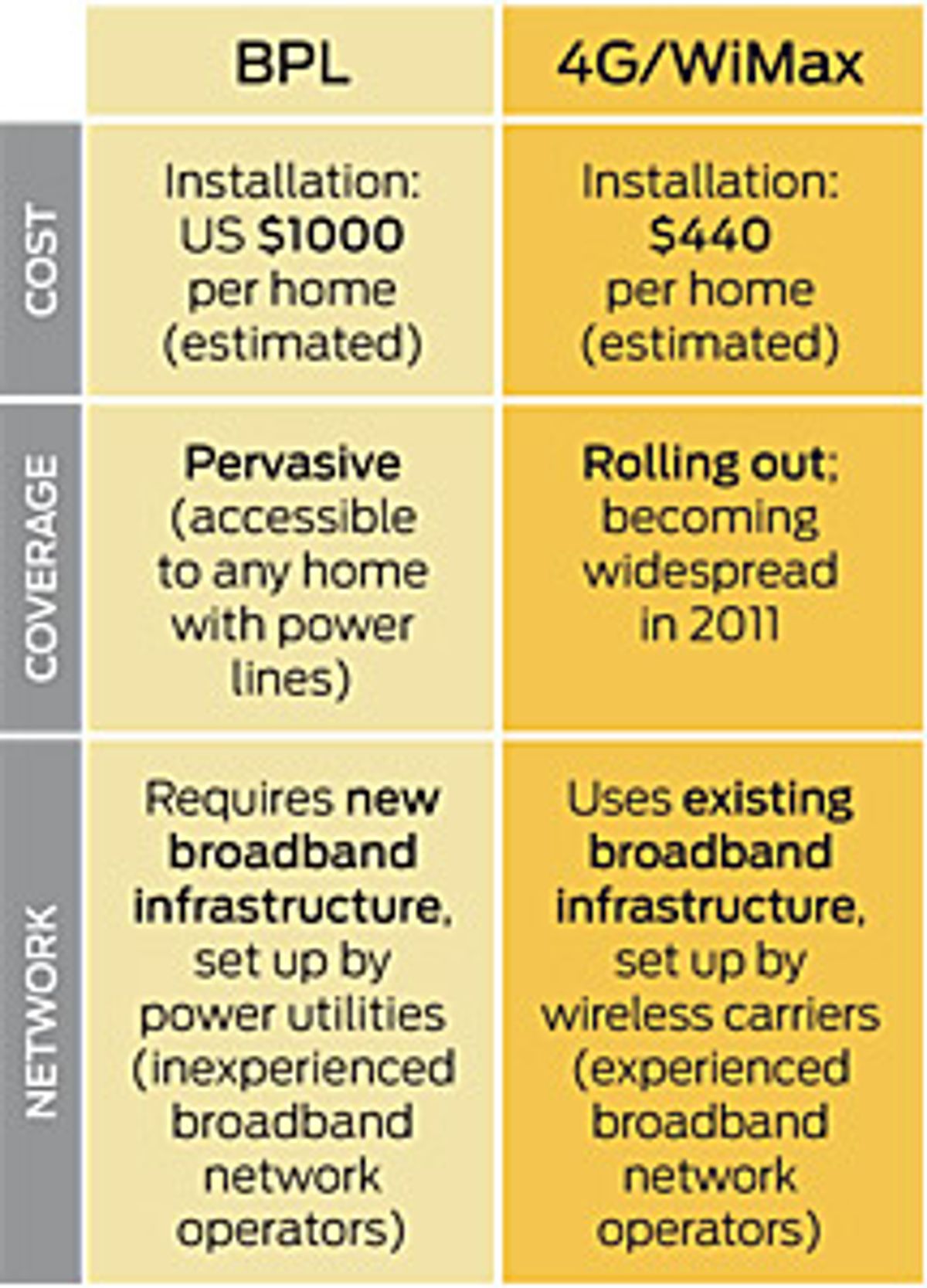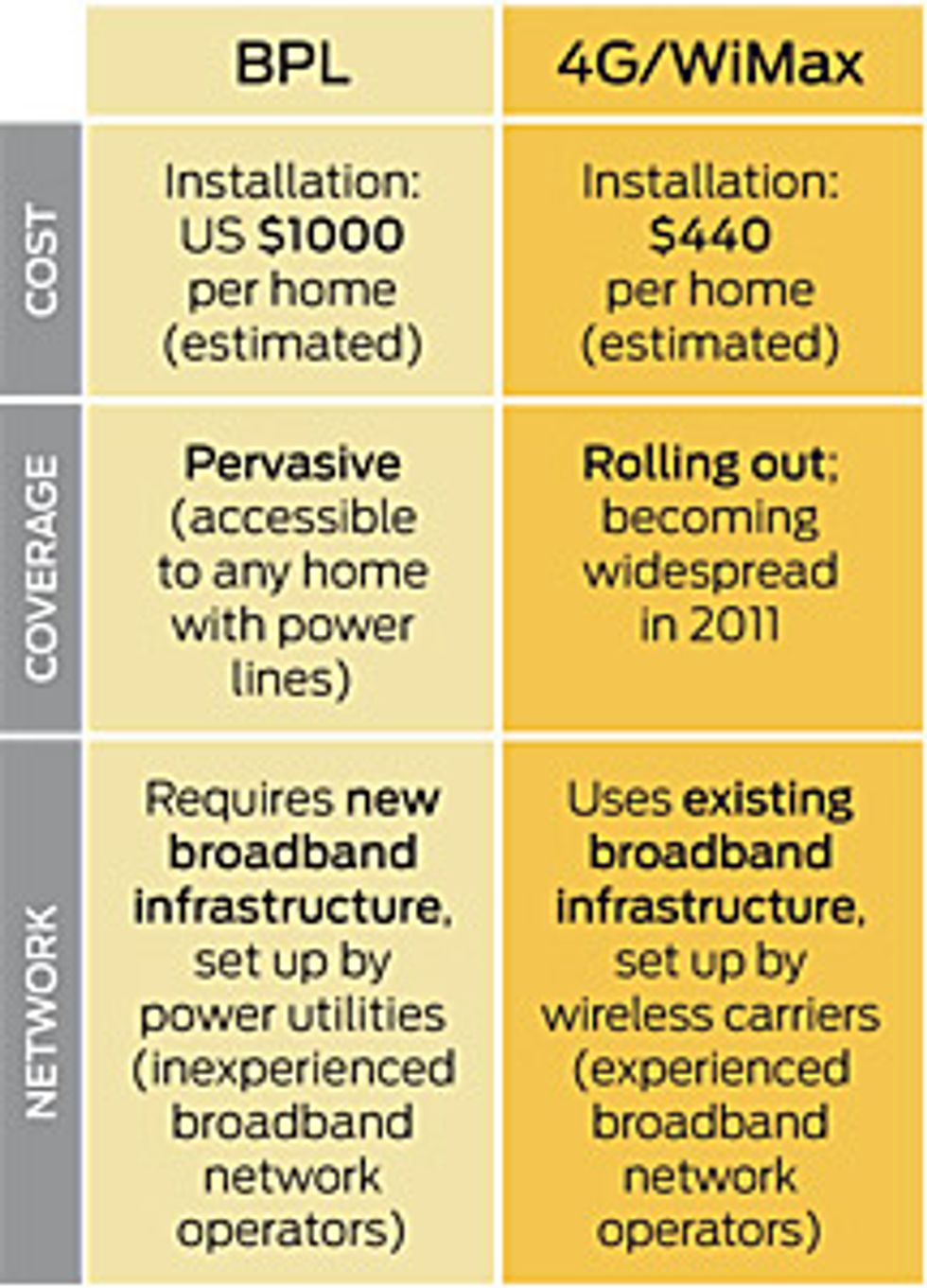Smart-Grid Smackdown
Broadband over Power Lines (BPL) vs. WiMax
Cellphone carriers are racing this year to implement 4G wireless networks so that future smartphones will have access to a fire hose of data. But the towers and infrastructure the carriers are putting in place may ultimately facilitate as many connections with appliances and electric meters as they do downloads of movies and music. The electricity grid, in other words, may be jumping from no G to 4G—and rather soon, according to analysts.
The reason, says Cecil Taylor of Blue Hawk Consultants, in Plano, Texas, is the array of data-rich applications expected in the next-generation electric grid: remote control of household electricity hogs like air conditioners, perhaps via a smartphone app; electricity price breaks at off-peak hours, leading to more automation for running appliances like dishwashers at night; and the ability to sell electricity generation (from solar panels) and storage (from a plug-in hybrid) back to the grid.
Once smart meters start appearing in the home, they’ll need something approaching broadband speeds to handle those data-rich applications. According to Don Kintner of the Electric Power Research Institute, a city with a million smart meters that communicate just an hour a day will end up transmitting nearly 300 gigabytes of data per year.
”If you’re a utility, you’d better get it right,” says Taylor. ”If you’re going to start building a network that’s going to last you 15 or 20 years, you’re not going to want a slow, ISDN network. You’re going to want a high-speed broadband network.”
Kris Brown, smart-grid investment advisor at PricewaterhouseCoopers in Houston, says he thinks WiMax, a 4G IEEE standard, could be that ”be-all, end-all” network, as he puts it. Pilot smart grids that use WiMax as part of their data communications have, in fact, already been rolled out in San Diego, Michigan, Texas, and parts of Australia.
This summer, 4G carrier Clearwire Corp. will be launching 3- to 6-megabit-per-second coverage with its cellular partner, Sprint Nextel, in at least 15 new markets in the United States. By summer’s end, Clearwire’s network, which uses WiMax, will be running in nearly 50 American cities. Later this year and into 2011, Verizon Wireless and AT&T will be launching their own competing 4G networks using a technology called LTE (for Long Term Evolution). Many cellphone carriers around the world are also expected to adopt LTE as their 4G standard—including T-Mobile, Vodafone, France Télécom, and Telecom Italia.
”There was a time when there was a great debate in communications whether WiMax or LTE would become the dominant wireless broadband technology,” says Jeff Nichols, director of network and communication services for Sempra Energy (which is fielding a smart-grid test in San Diego). ”That’s pretty much played out now. The carriers are going to bet on LTE. And WiMax is finding new applications, including many in smart grids.”
According to Taylor, LTE wireless networks will be choked with users doing high-bandwidth activities like video chats and mobile gaming, so those networks aren’t going to look attractive to utility companies. Utilities will need guaranteed bandwidth at high and low traffic times. To the loser in the 4G broadband war, then, may go the spoils.
Sempra Energy’s Nichols says utilities don’t particularly care what labels or standards go on the telecom technology they’ll be putting into their next-generation smart-grid electric meters. ”Utilities are agnostic about something like a radio technology,” he says. ”What they’re looking for is something that works and is cost-effective. I do think that WiMax will continue to play a role. It’s practical for now, and it’ll still be practical five years from now. Beyond that, who knows?”

